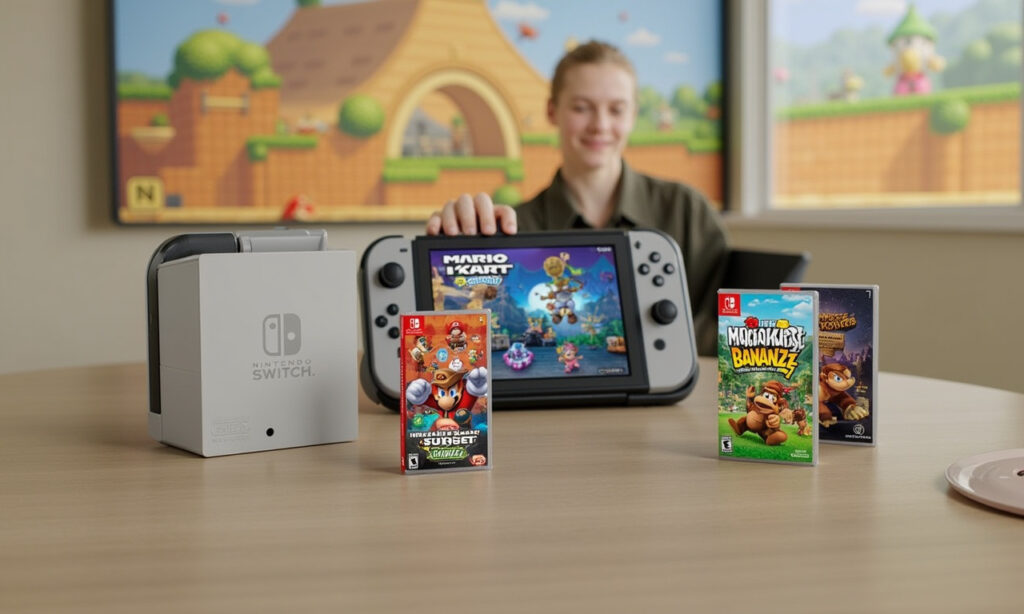The recent unveiling of the Nintendo Switch 2 has sparked a heated debate among gamers and industry analysts, particularly regarding its pricing strategy. With the console set to launch on June 5 at a hefty $449.99, and flagship titles like Mario Kart World priced at $79.99, many are wondering if Nintendo can justify these premium prices.
The Power of Exclusivity
Former CEO of Sony Interactive Entertainment America, Shawn Layden, has weighed in on the discussion, arguing that Nintendo’s exclusive franchises are a significant factor in the company’s ability to command higher prices. “80 bucks for a game, but if it’s the only place where you can play Mario, then you get your wallet out and you buy into it,” Layden explained. This first-party exclusivity, he believes, mitigates the sticker shock associated with these price hikes because fans are willing to pay a premium for content they cannot find elsewhere.
Pricing Strategy and Market Dynamics
The pricing of the Nintendo Switch 2 and its games is a strategic balancing act. Analysts suggest that the $449.99 price tag reflects a combination of increased manufacturing costs, ongoing uncertainty about tariffs, and a competitive market landscape. Nintendo appears to be building in a buffer against potential trade barriers while maintaining its traditional positive margin on hardware[3).
Tariffs and Manufacturing Costs
The looming specter of tariffs, particularly those imposed by the Trump administration, has added a layer of complexity to Nintendo’s pricing strategy. Analysts like Michael Pachter from Wedbush Securities predict that if tariffs are applied, the price of the Switch 2 could increase by $75-$100, pushing the total cost to around $525-$550[1].
Variable Pricing and Game Value
Nintendo has adopted a variable pricing model for its games, where the price is determined by factors such as the breadth and depth of gameplay, development costs, and the game’s overall value. For example, Mario Kart World is priced at $79.99, while Donkey Kong Bananza comes in at $69.99. This approach allows Nintendo to reflect the unique value proposition of each game rather than adhering to a one-size-fits-all pricing strategy[2][4].
User Experience and New Features
Despite the higher prices, the Nintendo Switch 2 promises significant improvements in user experience and new features. The console includes advanced graphical and audio capabilities, new mouse controls, and a game chat system. These enhancements are designed to make the gaming experience more immersive and engaging, potentially justifying the higher cost for enthusiasts[3].
Additional Costs and Controversy
The decision to charge $9.99 for the Nintendo Switch 2 Welcome Tour, a tutorial game that guides users through the console’s features, has also been met with criticism. While Nintendo defends the price as reasonable given the game’s robust content, some fans feel it should be included as a free pack-in game[5].
Market Reception and Future Implications
The reaction to the Nintendo Switch 2’s pricing has been mixed, with some fans expressing concern over the high costs while others seem willing to accept them for the sake of exclusive content. The success of this pricing strategy will depend on whether Nintendo can maintain its loyal customer base and attract new users despite the premium prices.
As the gaming industry continues to evolve, it remains to be seen whether Nintendo’s approach will set a new benchmark for game pricing. One thing is certain, however: the loyalty and willingness of fans to pay a premium for exclusive Nintendo content will be a crucial factor in the Switch 2’s success.
